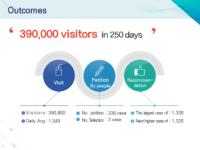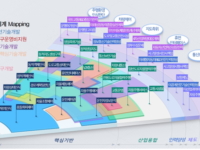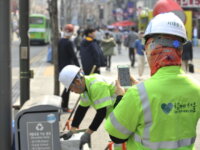Previous government-led safety inspection systems were not reflective of social needs and public interest in the foods and drugs that should be on the market.
The new system allows people not only to make policy proposals but to actively participate in food and drug inspections as well.
People are empowered to request inspection or examination of products when there is a growing public concern over the safety of the food or drug in question. The government will respond with an inspection or…
Country: Korea
For ventures and start-ups to overcome Valley of Death (failure to survive within the first 3-7 years from start) and to explore sales channels in the early stage, the Korean Public Procurement Service designed VENTURE NARA. VENTURE NARA is a "stepping stone" where ventures and start-ups can promote and sell their products in the early stage, and prepare for jumping into the broader markets. As a prior stage to the Online Shopping Mall, VENTURE NARA is put in place where any ventures and…
The Korea Power Exchange (KPX) set students and parents as policy targets and systematically connected electricity-saving activities with the performance of volunteer hours which reflected in grades of school students. This program, which estimates electricity savings as a service rather than money, is leading to changes in consciousness that are perceived as social values in the future. The People's Virtual Power Plant will eventually be fused with advanced technology (blockchain, AI, big data)…
The Government of Korea is beginning to implement a new innovation investment model, 'R&D PIE', which leverages big data analytics and machine learning in order to assess disruptive changes in the technology landscape, and to identify overlaps and potential opportunities across the Korean ministries. Through this, the government has a way of identifying missing links in the innovation initiatives, fostering collaboration among agencies, universities, and companies, and solving social problems.
The neighborhood of Seodaemun-gu in Seoul has implemented various Smart City/IoT activities:
1. The establishment of the control system of public trash bins
2. Operating the village bus information service for the safe return of residents
3. Establishment and operation of “Police security report app” for the safety of public restroom
4. Build a smart walking trail in Seodaemun An-san(An-mountain)
Gwanghwamoon 1st street served as a people’s transition office that collected citizen's suggestions for the new government through a variety of platforms including website, temporary office, local branches installed in every municipality, telephone, text message, and email. For 49 days after its launch in May 2017, it collected 180,705 suggestions, of which 99 were reflected in the national agenda.
The Korean government has implemented a program dubbed the One-stop Customized Lifecycle Services (OCLS) for heirs and expectant mothers, which was created by integrating existing services. With the OCLS in place, people no longer have to visit multiple government offices and they can take care of various issues at once. The government has also benefited from reduced costs and plans to emulate this success in other areas.
Medicinal products, due to their nature, have potential for side effects along with therapeutic effects even when they are used correctly. Since 19 Dec 2014, Ministry of Food and Drug Safety (MFDS) and Korea Institute of Drug Safety & Risk Management (KIDS) have instituted Adverse Drug Reaction(ADR) Relief System to help people inflicted by such side effects to receive aid without legal action.
Korean government has been calling for the innovation of education and training system to narrow the gap between school education and employers’ requirements and to address the high youth unemployment rate issue.
The Ministry of Employment and Labor and the Human Resources Development Service of Korea introduced the Work-Learning Dual System in 2013.
It was adopted to get rid of mismatches between school education and workplaces based on the National Competency Standards led by companies.
Seoul Metropolitan Government (SMG) announced the as a measure to enhance the city’s age readiness by supporting the younger elderly. The plan is one of the SMG’s social innovation model that has transformed towards the convergence of public policies to utilize the 50+generation as a meaningful social capital to cope with the city’s aging issues.





